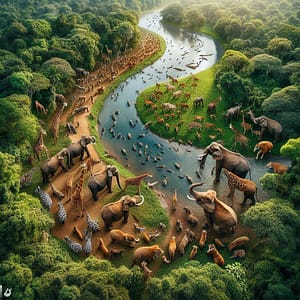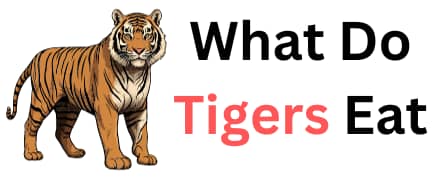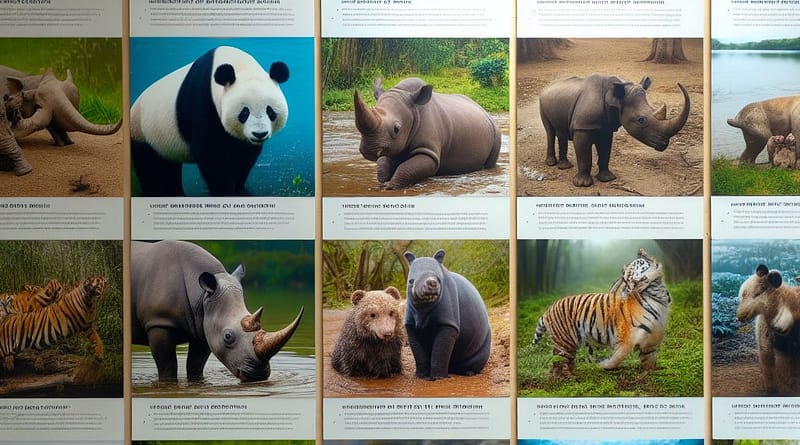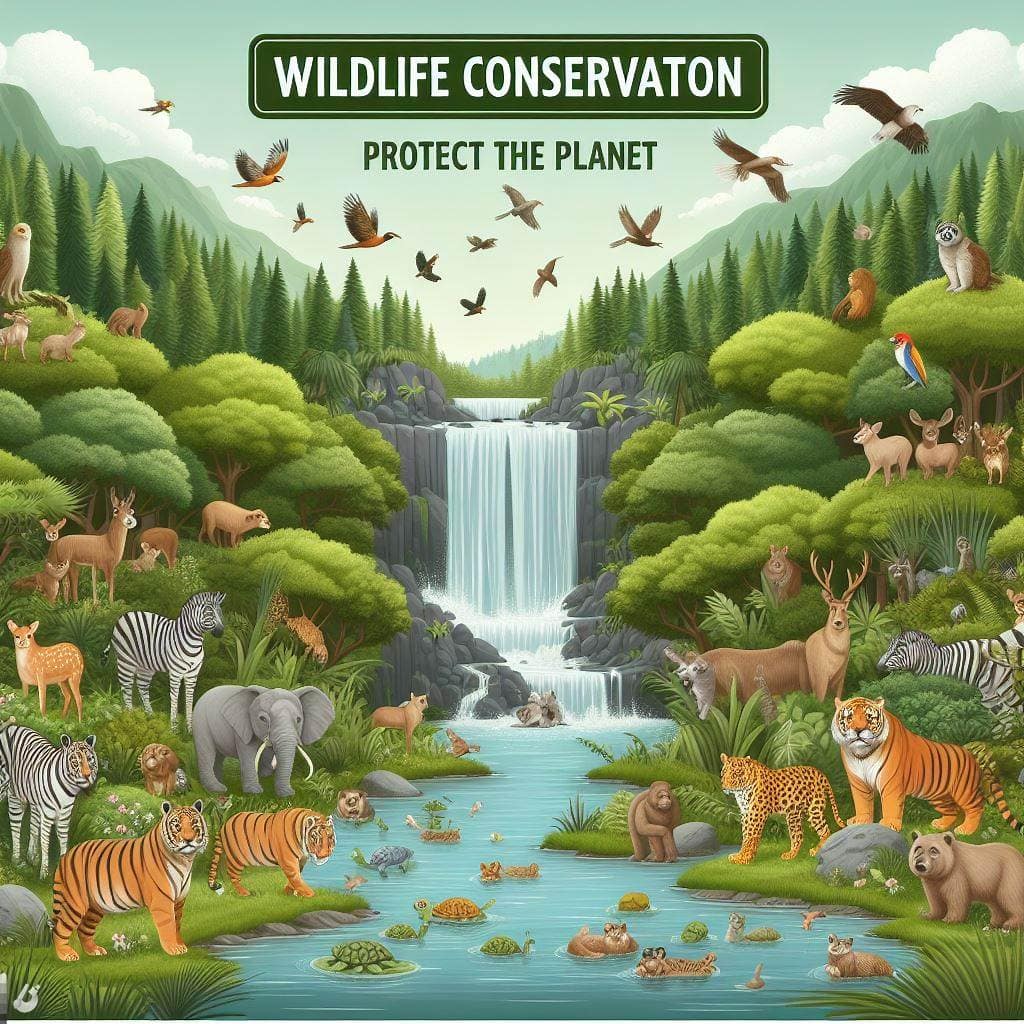Wildlife Conservation: Why It Matters and How to Do It
Introduction:
Wildlife conservation is the practice of protecting and restoring the natural habitats and populations of wild animals. It aims to prevent the extinction of species, maintain biodiversity, and support ecosystem services that benefit humans and nature.
Wildlife conservation is essential for the survival of many animals, especially those that are endangered or threatened by human activities. Some examples of wildlife that needs conservation are tigers, elephants, rhinos, pandas, gorillas, polar bears, sea turtles, whales, and many more.
Wildlife conservation is also important for human well-being, as it provides us with many benefits such as food, medicine, recreation, tourism, education, and cultural values. Wildlife conservation helps to regulate the climate, purify the water, pollinate the crops, and prevent the spread of diseases.
In this article, we will explore the advantages and disadvantages of wildlife conservation, the main threats and challenges that it faces, and the best practices and solutions that can help to achieve it.
 Advantages of Wildlife Conservation:
Advantages of Wildlife Conservation:
Wildlife conservation preserves the genetic diversity and evolutionary potential of species, which can help them adapt to changing environments and cope with new threats.
Wildlife conservation protects the habitats and ecosystems that support wildlife, which can also benefit other species that depend on them, including humans.
Wildlife conservation enhances the aesthetic, spiritual, and cultural value of nature, which can inspire people to appreciate and respect it more.
Wildlife conservation boosts the economic value of nature, which can generate income and employment opportunities for local communities through ecotourism, wildlife trade, and other activities.
Wildlife conservation improves the scientific value of nature, which can lead to new discoveries and innovations that can benefit human health and technology.
Disadvantages of Wildlife Conservation:
Wildlife conservation can be costly and time-consuming, as it requires a lot of resources, expertise, and coordination to implement and monitor effectively.
Wildlife conservation can be controversial and conflictive, as it may clash with the interests and values of different stakeholders, such as landowners, hunters, farmers, developers, governments, and NGOs.
Wildlife conservation can be challenging and uncertain, as it may face many obstacles and risks, such as poaching, habitat loss, climate change, invasive species, diseases, and natural disasters.
Wildlife conservation can be ineffective and counterproductive if it is not based on sound science, good governance, and community participation.
Wildlife conservation can be unethical and unfair if it violates the rights and needs of indigenous peoples and local communities that depend on wildlife for their livelihoods and cultures.
Main Threats to Wildlife Conservation:
The main threats to wildlife conservation are human-induced factors that negatively affect the habitats and populations of wild animals. Some of the most common threats are:
Habitat loss:
The destruction or degradation of natural habitats due to deforestation, agriculture, urbanization, mining, dams, roads, and other activities that reduce or fragment the space and resources available for wildlife.
Poaching:
The illegal killing or capturing of wild animals for their meat, fur, horns, ivory, shells, or other parts that are sold in the black market for high prices.
Overexploitation:
Excessive or unsustainable use of wild animals for food, medicine, pets, ornaments, or other purposes that exceed their natural reproduction rates or carrying capacities.
Pollution:
The contamination of air, water, soil, or food sources by chemicals, plastics, metals, radiation, or other substances that harm the health and survival of wildlife.
Climate change:
The alteration of global weather patterns is due to the increase of greenhouse gases in the atmosphere that affect the temperature, precipitation, seasons, and sea level of different regions and habitats.
Invasive species:
The introduction or spread of non-native plants, animals, or pathogens that compete with or prey on native wildlife or transmit diseases to them.
Human-wildlife conflict:
The interaction or confrontation between humans and wildlife that results in damage or injury to either party due to competition for space or resources.
Best Practices for Wildlife Conservation:
The best practices for wildlife conservation are actions or strategies that aim to prevent or reduce threats to wildlife and enhance their habitats and populations. Some of the most effective practices are:
Protected areas:
The establishment and management of areas that are designated and regulated for the conservation of wildlife and their habitats, such as national parks, reserves, sanctuaries, and corridors,.
Law enforcement:
The implementation and enforcement of laws and regulations that prohibit or control illegal or harmful activities that affect wildlife, such as poaching, overexploitation, pollution, and habitat loss,.
Education and awareness:
The provision and promotion of information and knowledge that increase the understanding and appreciation of wildlife and their conservation among the public and stakeholders, such as schools, media campaigns, and events.
Research and monitoring:
The collection and analysis of data and evidence that support the assessment and evaluation of the status and trends of wildlife and their habitats, such as surveys, censuses, inventories, and indicators,.
Community participation:
The involvement and empowerment of local communities and indigenous peoples who live in or near wildlife habitats in the planning and implementation of conservation activities such as co-management, benefit-sharing, and conflict resolution.
International cooperation:
The collaboration and coordination of different countries and regions that share or affect wildlife habitats and populations in the development and implementation of conservation policies and programs such as treaties, conventions, and agreements.
FAQs:
Q: What is the difference between wildlife conservation and wildlife management?
Wildlife conservation is a broader term that encompasses all the actions and strategies that aim to protect and restore wildlife and their habitats. Wildlife management is a specific aspect of wildlife conservation that focuses on the regulation and manipulation of wildlife populations and their interactions with humans and the environment.
Q: What are some examples of successful wildlife conservation projects?
A: Some examples of successful wildlife conservation projects are:
The recovery of the American bison from near extinction in the 19th century to over 500,000 individuals today is thanks to the efforts of conservationists, ranchers, and Native Americans.
The reintroduction of the Arabian oryx to the wild in Oman, Saudi Arabia, Jordan, and Israel, after being extinct in the wild since the 1970s, thanks to captive breeding and release programs.
The increase of the mountain gorilla population in Rwanda, Uganda, and the Congo, from less than 300 individuals in the 1980s to over 1,000 today, is thanks to anti-poaching patrols, community development, and ecotourism initiatives.
The reduction of the illegal trade of African elephant ivory, from over 1,000 tons per year in the late 1980s to less than 50 tons per year in the 2010s, thanks to international bans, law enforcement, and public awareness campaigns.
Q: How can I help wildlife conservation?
A: You can help wildlife conservation by:
learning more about wildlife and their habitats and sharing your knowledge with others.
supporting or joining organizations that work for wildlife conservation, such as WWF, IUCN, WCS, etc.
Donating or volunteering for wildlife conservation projects or campaigns that match your interests and skills.
adopting or sponsoring a wild animal or a protected area that you care about.
reducing your environmental impact by using less energy, water, and resources, recycling your waste, and avoiding products that harm wildlife, such as palm oil, fur, ivory, etc.
respecting and appreciating wildlife by observing them from a safe distance, avoiding feeding or touching them, and reporting any illegal or harmful activities that you witness.
Conclusion:
Wildlife conservation is a vital and noble cause that benefits both animals and humans. It is also a complex and challenging task that requires a lot of effort and cooperation from different actors and sectors. By understanding the importance and difficulties of wildlife conservation, we can better appreciate and support the work of those who dedicate their lives to it. We can also become more responsible and active citizens who contribute to the protection and restoration of our natural heritage. Wildlife conservation is not only a duty but also a privilege that we should cherish and enjoy.
More Readings:










